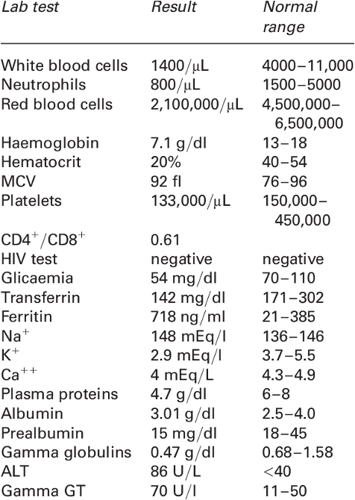The clinical laboratory data includes results from the blood and urine tests.
Blood Test
The most routine blood test is the complete blood count, and it measures the levels of various components of every major cell in the blood, including red blood cells (RBCs), white blood cells (WBCs), platelets, hemoglobin, and hematocrit. It provides valuable information about the overall health and functioning of the blood and can help detect a wide range of conditions, such as anemia, infections, inflammation, and bleeding disorders.
Another very common test is the basic metabolic panel, which is a group of tests that measure different naturally occurring chemicals in the blood. This is carried out on the plasma part of the blood, and it measures the levels of glucose, electrolytes (such as sodium, potassium, and calcium) and kidney function markers (such as creatinine and blood urea nitrogen). These components provide insights into organ function, metabolic status, and risk factors for certain diseases.
The lipoprotein panel also known as the lipid profile, measures the levels of LDL and HDL cholesterol and triglycerides, indicating the risk of cardiovascular diseases and other conditions.

Image source: https://images.app.goo.gl/PMBVKkdZVdLHGoga6
Urine Test
A routine urine test, also known as a urinalysis, examines the physical, chemical, and microscopic properties of urine. It includes visual, chemical and microscopic examinations.
The appearance of the urine, its clarity and color can indicate the presence of blood, proteins and certain drugs.
The chemical test includes placing a stick with chemical strips in the urine. The strips would change color indicating the presence or levels of different components such as glucose, ketones, proteins, bilirubin, blood, nitrites, leukocytes, and erythrocytes as well as the pH and concentration of the urine.
The microscopic examination involves viewing drops of concentrated urine under a microscope to detect the presence of crystals, casts (tube-shaped proteins), pathogens, red blood cells, white blood cells and epithelial cells. These can provide additional diagnostic information.